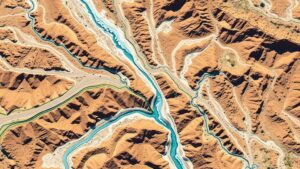How to Use Dowsing to Track Historical Trade Routes and Buried Goods
How to Use Dowsing to Track Historical Trade Routes and Buried Goods
Dowsing, often referred to as divining or witching, is the practice of using a forked stick, pendulum, or another instrument to locate underground water, minerals, or other hidden things like historical artifacts. Although often associated with mysticism, dowsing has practical applications, particularly in archaeology and history. This article delves into the methodology of dowsing to identify historical trade routes and buried goods, examines its validity, and highlights its significance in modern research.
The Principles of Dowsing
Dowsing is based on the belief that a person can connect with hidden energies or vibrations in the Earth. Practitioners typically use tools such as:
- Y-shaped rods: Often made of wood or metal, when held in a Y shape, they are said to react when the dowser is over a target.
- Pendulums: A weighted object suspended from a chain or string, which moves in response to energy changes.
Though scientifically disputed, some proponents argue that dowsing acts through subconscious intuitive processes, allowing dowsers to react to physical indicators in the environment. In the context of tracking trade routes and buried goods, dowsing can contribute valuable insights when used alongside traditional archaeological techniques.
Historical Context of Trade Routes
Trade routes have played a crucial role in the economic development of civilizations throughout history. For example, the Silk Road connected the East with the West, facilitating not just trade but cultural exchange. To identify these routes and locate artifacts related to them, dowsing can be a pivotal tool. Historically, there are documented cases of dowsers successfully locating ancient routes or sites of buried goods.
Methodological Approaches in Dowsing
The methodology of using dowsing to track historical trade routes generally involves several steps:
- Preparation: Dowsers should familiarize themselves with both the historical context and the geographic area of interest. This includes studying maps, historical texts, and known archaeological findings.
- Site Selection: Identify potential locations using a combination of historical research and site surveys to pinpoint areas where trade activity likely occurred.
- Dowsing Session: During the dowsing session, the dowser systematically moves through the area while holding their dowsing tool, remaining open to any signals indicating the presence of buried goods or trade routes.
- Documentation: Any findings must be recorded meticulously for later analysis, along with associated site conditions and environmental factors.
Case Studies of Successful Dowsing
Several case studies illustrate successful applications of dowsing in archaeology. For example:
- The Urns of Kettles Yard: In the mid-20th century, a dowser was employed to locate ancient burial sites in England and successfully identified the presence of urns based on dry ground patterns.
- The Lost Routes of the Roman Empire: Certain researchers have used dowsing to trace forgotten Roman trade routes, helping to uncover sections of ancient roads that were previously thought lost to history.
Critiques and Limitations
Despite anecdotal successes, dowsing faces skepticism from the scientific community. Critics argue that outcomes can often be attributed to chance or the ideomotor effect–where the dowser’s subconscious movements influence the tool. Also, the absence of repeatable, controlled results raises questions about its reliability as an archaeological technique.
Nonetheless, proponents argue that dowsing can serve as a complementary tool rather than a standalone method. It can guide more formal investigative processes, particularly in areas that are not easily accessible or where traditional archaeological methods are limited.
Conclusion: Actionable Takeaways
While the scientific community remains divided on the efficacy of dowsing, its historical practice offers a unique perspective and potential for the exploration of trade routes and buried goods. To incorporate dowsing into research effectively:
- Conduct preliminary research to understand the historical context and geographical layout of trade routes.
- Use dowsing as an exploratory tool rather than a definitive means of information acquisition.
- Document findings carefully to correlate them with subsequent archaeological investigations.
Ultimately, the intersection of dowsing and archaeology continues to intrigue both practitioners and scholars alike, offering a blend of intuition and history that enriches our understanding of past trade networks.


